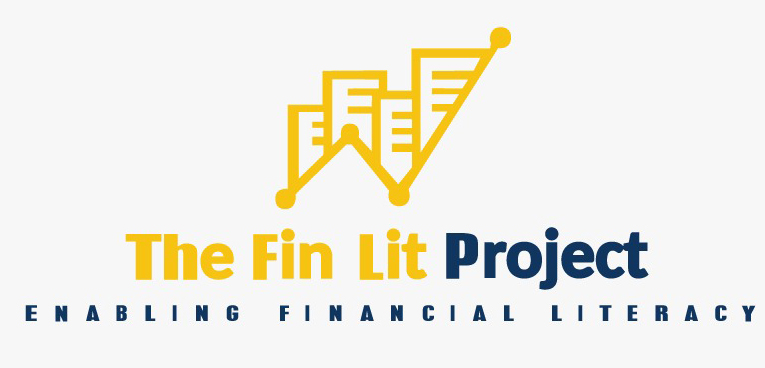Here is what you need to know as a 21st century millennial!

Source: https://images.financialexpress.com/2020/05/US660.jpg
The homeland to the historic and largest stock exchanges of the world is a ripe architectural dome to learn, study, invest and trade.
For a beginner, there may be a barrage of questions about investing in US markets. To navigate towards the hunt, here are the bonnets of needed information:
Source: https://image.cnbcfm.com/api/v1/image/106551736-1590491115191
The buzz for the new bees:
- What are some integrities an investor must know before entering the US markets?
For any investor, keen with an interest to enter the US market frontiers, it’s vital to plan especially at the early stages of investment.
The planning process entails the following integrities owing to the high volatility virtue of the stock market climate:
Prelude
Before playing a game, understanding the rules is where we begin.
Market Terminologies and Lexical can be skeptical yet interesting! Initial investment must be in getting to know the fundamental and technical terminologies.
To begin the game, US Markets are open from 9:30 am – 4:00 pm Eastern Time on weekdays, closed for holidays such as Thanksgiving Day, Memorial Day, Independence Day etc.
Markets
The largest investment ground is the Wall Street, the home to the largest stock exchanges of the globe:
- New York Stock Exchange (NYSE) [Also known as The Big Board]
- National Association of Securities Dealers Automated Quotations (NASDAQ)
The nation is a shelter to a lot of other stock exchanges mostly conglomerated under NYSE and NASDAQ making the environment highly competitive.
The stock market index is the benchmark to understand the face value of volume of transactions and stock performance. The paramount indices (widely followed) are:
- Standard & Poor 500 (S&P 500)
The single indicator of top 500 large cap companies from different sectors
- Dow Jones Industrial Average
The benchmark of top 30 blue chip companies from different sectors
- NASDAQ Composite Index
The broad-based index of Technology and Consumer Services companies
- NASDAQ – 100 (NDX)
The Large-cap growth index of non-financial companies (Technology, Healthcare, Consumer Services)
- Russell 2000 Index
The small cap, big bucks’ indicator
Market players
The diversity and dynamism of market players creates the exchange weathers, seasons, and climate.
It’s the minds that play, the market reacts and responds to it.
Volatility is caused due to a plethora of market players and their behavior amongst the cross-section of individual players and institutional players.
The two main categories are investors and traders (Day 1 versus One Day)
An investor strives to build a portfolio for a long-term with an aim to earn returns and capital appreciation.
A trader aims to capitalize on market fluctuations to maximize profits which could be short term behaviors of Intra-Day (Within the day) and Inter-day transactions (Between the days).
High Frequency Traders (HFTs) are very common in the market who try to monitor and capitalize benefits from milliseconds of data as front runners.
Algorithm Traders (Algo Traders) feature as invisible hands in the market with sound technical acumen driving technology for returns, manipulations, and corrections.
Understanding the market players in the game, enables understanding of the market for volatility, highs (bullish trend), lows (bearish trend) to build robust investment strategies and risk management techniques.
Investment Ground
Investment motive comes with an objective of returns and capital appreciation.
The climatic conditions and the market behavioral patterns on a large-scale influence in achieving the investment goals.
The key is to observe, study and learn about the factors influencing the investment climate and the cause-effect relationship on the markets.
The understanding mindset about the investment climate with weathers and seasons of highs and lows, reasons for points to evaporate, condense and precipitate largely requires Financial Literacy to be a smart spectator.
The game is bang on when you know the ground rules!
The dynamism of phases and market cycles has to be well understood for planning and decision making in the aspects of:
- Setting Investment goals
- Dividends
- Growth
- Value
- Tax Planning
- Retirement savings
- How much to invest
- Investment Platform
- Investment formalities
- When to invest
- Visibility of market cycles
- Lessons from study of past and present trends
- Horizon of investment (Time)
- Where to invest:
- Equity (Risky with high returns),
- Mutual funds (moderate risk and moderate returns),
- Bonds (Low risk and lower returns)
- Portfolio diversification and revision ratios with age with exposure:
- 20s: 7-8 market cycles (Can hold for a long-time)
- 30s: 5-6 market cycles (Holding period during Employment)
- 40s and above: 3-4 market cycles (Retirement planning)
- Strategizing Risk Tolerance
- Aggressive
- Conservative
- Risk Averse
2. Is it important to understand the historic and recent market cycles?


The study of the historic and recent market cycles is crucial for a 21st century millennial, especially knowing the recession and recovery stories to be well prepared than to panic:
| Recessions | Cause | Recession Period | Recovery years |
| Energy Crisis (1981-1982) | Iraqi invasion of Kuwait – Oil Price inflation | 2 years | 1983-1985 |
| Early 1990s Crisis (1990-1991) | Restrictive Monetary Policy of Federal Reserve | 8 months | Jobless Recovery (1993-1994) |
| Dot-com Bubble crisis
(2000-2001) |
Excessive speculation of internet based companies | 8 months | 2002-2004 |
| Great Depression
(2008-2009) |
Subprime Mortgage crisis | 1 year 6 months | 2009-2011 |
| Covid-19
(2020) |
Global Pandemic | 1 year 2 months | 2021 |
- Is it the best to invest / trade in the beginning?
For a beginner, it’s always recommended to explore investment dynamism before plunging into trading.
A visionary of a medium and long-term develops a short-term perspective gradually.
With increased volatility, also signified by Volatility Index (VIX) when moves ahead of 20 at accelerating pace, may reach 30 being the heightened number of crash periods. Hence, beginning with trade can create panic and apprehension of fluctuations.
Begin with S & P 500, and slowly explore the other indices to diversify.
- How are the US Brokerages?
The inevitable persona between market players and stock exchanges is the Stockbrokers.
The Brokerages are not charged on stock volume, but on the transaction of trade/investment.
Apart from Full Service and Discount Brokers, tech and algo savvy Robo advisors (application of Modern Portfolio Theory) act as reliable intermediation.
There are Independent and Captive brokers with holistic advisory and specifics respectively.
The Brokerages depend largely on the type of transactions and the type of brokerage service availed.
- What is all about the cryptocurrencies buzz?
Cross-Border transactions faced challenges:
- Currency counterfeiting and manipulations
- Cross border transfer erratic delays
- High cost for financial services
- Inflation
- Centralized system for fund transfer
Digital Currencies arrest the challenges with cryptology and technology integration with safety, security, and authorized access in the decentralized system via Smart Contracts.
This was the birth story of Cryptocurrencies that uses blockchain technology to mine tokens, with a bang on transactions across the globe and a surge of speculations, volatility, and developments.
The US markets have begun accepting collateral and payments in cryptos with the currencies becoming digital assets.
The various Initial Coin Offering (ICO) nodes to mine are:
- Bitcoins
- Ethereum (ETH)
- Litecoin (LTC)
- Cardano (ADA)
- Polkadot (DOT)
- Stellar (XLM)
- Chainlink
- Binance Coin (BNB)
- Tether (USDT
- Monero (XMR)
- Can an 11-year-old invest?
Warren Buffet is a living example!
It is wise to simulate investing via parent’s support until 18.
- What’s fractional investment technique?
Years back, there was a Minimum Stock Purchase limit to enter the exchange threshold.
With Fractional Investment implemented, even 0.1 of a stock, can be purchased and sold at a click on the screen.
This has encouraged greater participation from low purchasing power segments close to 60% in the market with incremental volume.
- What are the different trends in 2022 for investors?
Recovery period of the beginning of Pandemic’s end can witness:
- Blue Wave – Change of Presidency, Government reforms implications (Tax, Inflation)
- Pharma stocks to shoot up with increased demand
- Restaurant stocks to be sought for
- Travel stocks to pent up
- Tech stock trough – MAAMG (Meta Facebook Amazon Apple Microsoft Google) and not FAANG (Facebook, Amazon, Apple, Netflix& Google)
- Litigation to slow the bullish tech blue chips
- Work from home stocks (Zoom) to be impacted by vaccinations
Name in the Game
Befriend Investments.
Rotations would be common and not to be apprehensive of.
Take any news with a pinch of salt.
Prepare to never panic.
<Disclaimer: The article is based on thorough research and analysis, there’s no endorsement for any instrument and only credible information is furnished>




An 👁️ opener to a investor who is keen to know the markets. Will be surely benefitted by reading this article.
Kudos to Divya Suresh
Super good article. Good for beginners. To get the breadth of US markets. Well-done.